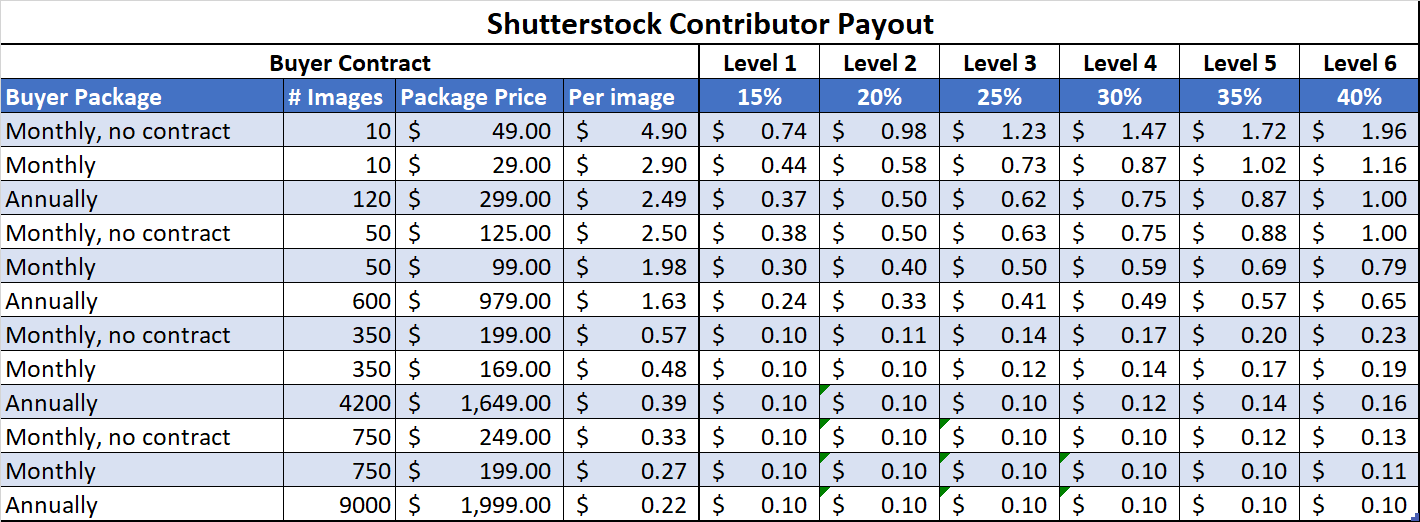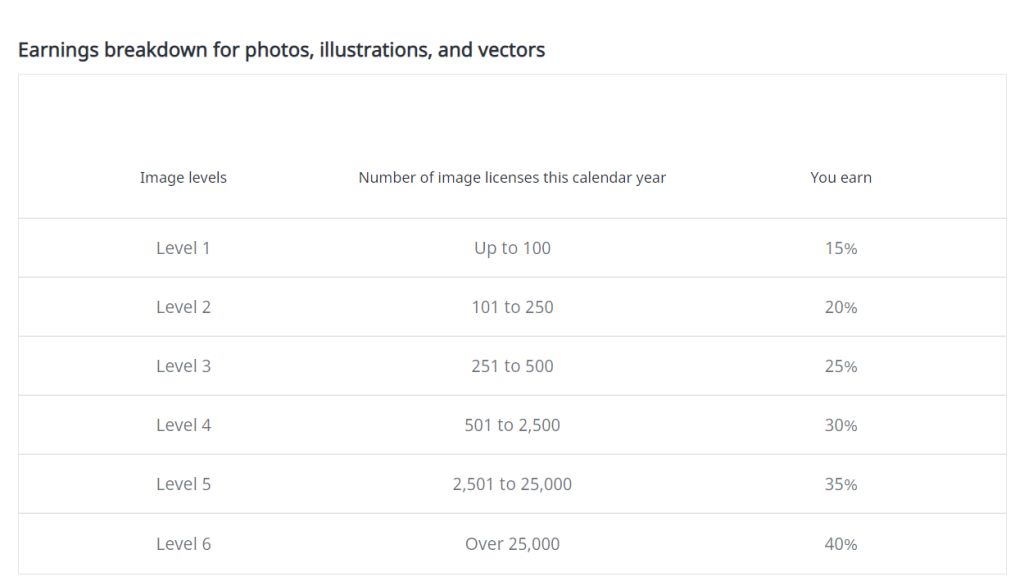Starting out as a contributor on Shutterstock can feel both exciting and a little overwhelming. You’re eager to share your photos and start earning, but the whole process might seem confusing at first. Don’t worry! Shutterstock is one of the biggest stock photo platforms out there, making it a great place for photographers and designers to get their work in front of a global audience. In this post, we’ll walk through what you need to know about your first month’s earnings, so you can set realistic expectations and make the most of your new side hustle or career path.
Factors That Influence Your First Month Earnings

When you first start uploading to Shutterstock, your earnings can vary widely based on several key factors. Understanding these will help you strategize and improve your chances of earning more early on. Let’s break down some of the most important influences:
- Number of Approved Submissions: The more high-quality photos you submit that get approved, the more potential income you can generate. Quality matters just as much as quantity!
- Image Quality and Relevance: Clear, well-lit, and unique images tend to perform better. Also, making sure your keywords and descriptions are accurate helps your images get found by buyers.
- Market Demand: Certain niches like business, technology, lifestyle, or seasonal themes tend to sell more often. Research trending topics to align your uploads accordingly.
- Pricing and Licensing: Shutterstock offers different licensing options, and some images might earn more based on the license type purchased. Keep this in mind when uploading.
- Uploading Frequency: Regular uploads can boost your profile visibility. Consistency helps in building a portfolio that attracts repeat buyers.
- Personal Promotion and Engagement: Sharing your portfolio on social media or participating in Shutterstock forums can increase exposure and potential sales.
It’s also important to remember that your first month earnings might be modest. Stock photography is often a slow start, especially if you’re just beginning to build your portfolio. Focus on uploading quality images, understanding what sells, and engaging with the community. Over time, as your portfolio grows and you understand the market better, your earnings are likely to increase. Stay patient, keep learning, and enjoy the creative journey!
How to Track and Calculate Your Income

Getting a clear picture of how much you’re earning on Shutterstock is super important, especially when you’re just starting out. The good news is that Shutterstock provides a straightforward way to keep tabs on your earnings, but knowing how to interpret that data can make a big difference in understanding your progress.
First off, after you upload your images and they start to sell, you’ll want to regularly check your Royalty Earnings Dashboard. This is where Shutterstock displays your earnings, sales, and other vital stats. You can access it through your contributor account at any time.
Here’s how to effectively track and calculate your income:
- Review your sales reports regularly: Shutterstock offers detailed reports that break down your earnings by date, image, or license type. Get into the habit of checking these weekly or bi-weekly so you stay updated on your performance.
- Understand the payout structure: Shutterstock pays contributors based on a percentage of the license fee, which varies depending on your contributor level and the type of license purchased. Usually, you’ll earn between 20% to 30% per sale, but it’s good to double-check the current rates in your account.
- Calculate your gross earnings: Simply add up all the earnings from your sales within a specific period to see your total gross income.
- Factor in taxes and fees: Remember, depending on your country, taxes may be deducted before you receive your payout. Keep track of these deductions for accurate income calculation.
For a quick calculation, here’s a simple example: If you made 10 sales at an average of $10 each, and your royalty rate is 25%, your gross earnings would be:
| Number of Sales | Average Price per Sale | Royalty Rate | Total Earnings |
|---|---|---|---|
| 10 | $10 | 25% | $25 |
This kind of quick math can help you set goals and understand how your images are performing financially.
Tips to Maximize Your Earnings in the First Month

Starting strong on Shutterstock is all about smart strategies and a little bit of patience. Here are some practical tips to help you boost your earnings during your first month:
1. Focus on Quality Over Quantity
While it might be tempting to upload as many images as possible, quality really matters. High-quality, well-composed images that meet current market demands are more likely to sell. Take your time editing and selecting the best shots.
2. Research Trending Topics and Niches
Stay ahead of trends by browsing Shutterstock’s popular collections and trending search terms. Creating images around in-demand themes like remote work, sustainability, or health can increase your chances of sales.
3. Use Effective Keywords
Keywords are your main way for buyers to find your images. Be specific, relevant, and use all available keyword slots. Think about what someone might search for and include synonyms or related terms.
4. Upload Consistently
Consistency is key. The more quality images you upload regularly, the higher your chances of being discovered. Set a manageable schedule, like uploading a few images each week.
5. Promote Your Portfolio
Share your Shutterstock portfolio on social media, blogs, or forums related to your niche. Building a community or audience can lead to more views and sales.
6. Keep Learning and Adapting
Pay attention to which images sell best and adapt your future uploads accordingly. Take advantage of Shutterstock’s resources, tutorials, and community forums to improve your skills.
By implementing these tips, you’ll set a solid foundation for your earnings and grow your presence on Shutterstock. Remember, success doesn’t happen overnight, but with dedication and smart work, your first month can be a rewarding start to a lucrative journey!
Common Challenges New Shutterstock Contributors Face
Getting started on Shutterstock as a new contributor can be exciting, but it’s also normal to encounter some hurdles along the way. Understanding these common challenges can help you navigate the process more smoothly and set you up for success.
One of the biggest challenges is understanding what kind of content performs well. Shutterstock has a wide audience, and not every image, video, or illustration will get the same amount of attention. It’s easy to get discouraged if your first uploads don’t get many downloads, but remember—quality and relevance matter. Spend some time researching popular categories and styles, and try to create work that aligns with current trends.
Another common issue is mastering the technical aspects of submitting high-quality files. This includes ensuring your images are in the correct resolution, properly tagged, and meet Shutterstock’s technical specifications. Small mistakes like incorrect color profiles or blurry images can lead to rejection, so take the time to review your files carefully before uploading.
Some new contributors also struggle with the tagging and keywording process. Tags are crucial because they help buyers find your work. Using too few keywords or not relevant ones can limit your content’s visibility. Conversely, overstuffing with unrelated tags can also be problematic. The key is to be specific, accurate, and thoughtful with your keywords.
Consistency is another challenge. Building a portfolio that gets noticed often requires regular uploads. It can be tempting to wait until you feel your work is perfect, but often, steady progress and frequent submissions lead to better exposure and more downloads over time.
Lastly, dealing with rejection can be tough. Shutterstock reviews each submission to ensure it meets their quality standards. Rejections aren’t personal—they’re part of the process. Use feedback to improve your future uploads, and don’t be discouraged. Many successful contributors faced rejection initially but kept refining their work.
Conclusion and Next Steps for New Contributors
Starting your journey as a Shutterstock contributor is an exciting step toward turning your creativity into income. While challenges are part of the process, they’re also opportunities to learn and grow. Remember, patience and persistence are key. Take the time to understand what works, hone your skills, and stay consistent with your uploads.
Now that you’re aware of common hurdles, your next steps are clear:
- Research trending topics and styles to keep your content relevant.
- Perfect your technical skills for creating high-quality files that meet Shutterstock standards.
- Develop a keyword strategy to improve your content’s discoverability.
- Stay consistent with your uploads to build your portfolio and increase your chances of success.
- Learn from feedback and rejections to refine your work continually.
Most importantly, enjoy the creative process! Each upload is a step forward, and with time, patience, and dedication, you can build a thriving portfolio on Shutterstock. Keep experimenting, stay motivated, and celebrate each milestone along the way. Happy contributing!


